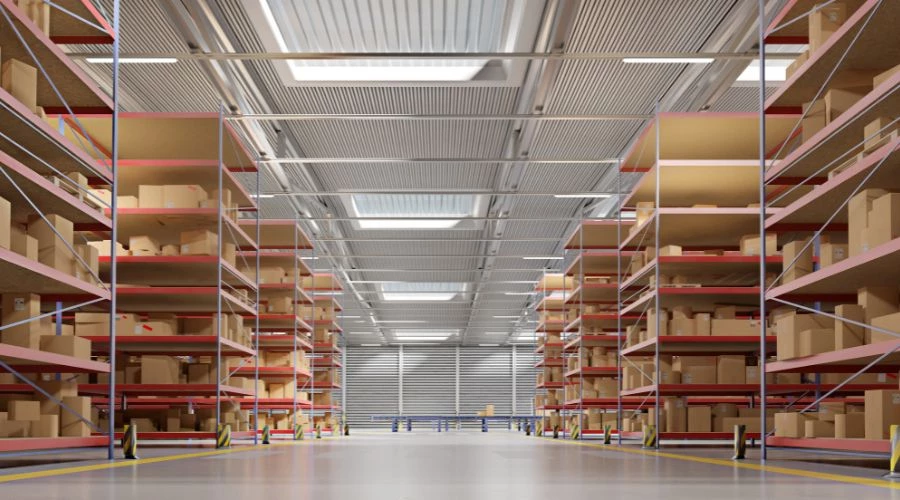
Imagine walking into a warehouse filled with boxes stacked haphazardly, products scattered randomly, and a complete lack of organization. It's a chaotic scene that hampers productivity and leads to financial losses. In this article, we'll explore the detrimental consequences of disorganized storage in warehouses, the importance of organized storage, and effective strategies to mitigate these challenges.
Warehouse organization plays a pivotal role in the smooth operation of any business. A well-organized warehouse ensures efficient inventory management, faster order fulfillment, improved employee productivity, and ultimately, customer satisfaction. However, many businesses struggle with maintaining an organized storage system, resulting in substantial financial setbacks.
Having an organized storage system in a warehouse is crucial for several reasons. Firstly, it allows for easy accessibility and retrieval of goods, reducing the time spent searching for specific items. When products are organized logically, employees can quickly locate and pick items, streamlining the order fulfillment process.
Secondly, organized storage helps prevent the loss, damage, or expiration of goods. With a clear arrangement and labeling system, employees can identify perishable items or those nearing expiration, reducing the chances of waste. Moreover, fragile products can be stored appropriately, minimizing breakage or spoilage.
Lastly, a well-organized warehouse enhances safety measures. When items are stored in designated areas and pathways are clear, the risk of accidents, such as tripping or falling objects, is significantly reduced. This leads to a safer work environment and lowers the potential for employee injuries or damage to valuable inventory.
Disorganized storage in warehouses presents numerous challenges that hinder operational efficiency and profitability. Let's delve into some of the common issues businesses face:
A disorganized warehouse often results in inaccurate inventory records. When products are not stored systematically, it becomes difficult to track their quantity and location accurately. This can lead to overstocking, understocking, or even stockouts, resulting in lost sales opportunities and dissatisfied customers.
Disorganization often leads to wasted space within a warehouse. Poorly arranged items occupy unnecessary floor space, limiting the capacity for additional inventory or expansion. Optimal utilization of warehouse space is essential to accommodate growing stock levels and increase operational efficiency.
Without a proper storage system, employees spend excessive time searching for items, leading to decreased productivity and increased labor costs. The lack of organization creates confusion, delays, and frustration among workers, adversely affecting overall warehouse performance.
Inadequate storage methods contribute to damaged or expired inventory. When products are not stored correctly or are left in unsuitable conditions, they may deteriorate, rendering them unsellable. This results in financial losses and can damage the reputation of the business.
The financial impact of disorganized storage in warehouses can be significant and detrimental to a business's bottom line. Let's examine some of the key areas where financial losses occur:
Disorganized warehouses are more susceptible to inventory shrinkage, which refers to the loss of inventory due to theft, damage, or administrative errors. Inaccurate records and a lack of proper security measures make it easier for items to go missing or be mishandled, leading to financial losses for the business.
Disorganized storage contributes to higher carrying costs. When items are not stored optimally, valuable warehouse space is wasted, and additional expenses are incurred for storing excess inventory. Moreover, inefficient space utilization requires more labor, equipment, and energy consumption, further escalating operational costs.
Disorganization in warehouses can lead to delays in order fulfillment, which directly impacts customer satisfaction. When products are difficult to locate or retrieve, orders cannot be processed efficiently, resulting in delayed shipments and dissatisfied customers. This can lead to negative reviews, lost sales, and potential customer churn.
To overcome the challenges posed by disorganized storage, businesses should implement effective warehouse organization strategies. Here are some key strategies to consider:
Creating a logical layout is essential for an organized warehouse. This involves categorizing products based on their attributes, assigning specific storage areas for each category, and maintaining a clear pathway for easy navigation. It's crucial to arrange items based on their frequency of use to optimize efficiency.
Investing in appropriate shelving and racking systems enhances storage efficiency. Utilize adjustable shelves and racks that can be customized to accommodate different product sizes. This ensures maximum utilization of vertical space, reduces clutter, and facilitates easy access to items.
Leveraging inventory management systems can streamline storage operations. These systems enable accurate tracking of inventory levels, facilitate real-time visibility of stock, and automate reordering processes. Advanced technologies like barcode scanning and RFID tagging further enhance accuracy and efficiency.
Maximizing space utilization is crucial for efficient warehouse management. Consider implementing techniques such as cross-docking, where incoming goods are unloaded from inbound vehicles and immediately loaded onto outbound vehicles, reducing the need for storage. Additionally, periodically review stock levels and rearrange items to maximize available space.
Disorganized storage in warehouses can have severe financial implications for businesses. From inventory inaccuracies to increased labor costs and damaged inventory, the consequences are far-reaching. Implementing effective warehouse organization strategies, such as logical layouts, proper shelving systems, inventory management systems, and space optimization, can alleviate these challenges and yield numerous benefits. By prioritizing organized storage, businesses can enhance operational efficiency, reduce costs, and provide better customer experiences. Consultants at 13 sqft can help you better organize your warehouse and provide you with the best available racking solution in the market.
POSTED BY
Ishika Adhana
Digital Marketing Executive